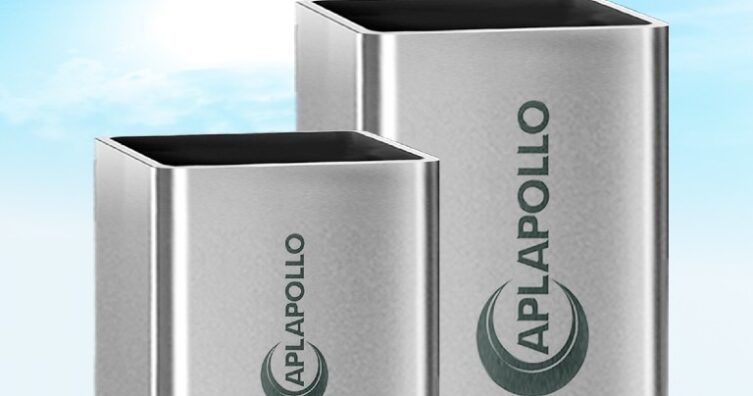Tubular structures are aesthetically more pleasant in appearance. It has a smoother surface, is easier to paint, and needs no shuttering because of its perfect square shape
Tubular steel structures are a popular trend in the construction industry. They are durable, long-lasting, and, most importantly, customisable. Tubular construction is a structure-building technology in which parts are fabricated off-site and brought to the site for final assembly. Because of its significant benefits over traditional building processes, this technology has grown in popularity recently.
Tubular construction is a building technology that uses steel tubes to produce a building’s superstructure. These tubes are joined together using a nut and bolt system to make a solid and robust structure capable of supporting the weight of the building. It is an efficient method of constructing significant, long-lasting, and environmentally friendly structures.
The process of tubular construction
The tubular construction process begins with the design and engineering of the building. That includes creating detailed plans and specifications for each section of the building. These sections are then manufactured in a factory setting, maintaining superior quality.
Once the sections are complete, they are transported to the construction site and assembled using cranes and other equipment. This process is much faster and more efficient than traditional construction methods, which require much on-site work and can be delayed by weather, labour shortages, and other factors.
Benefits of tubular construction
Quick Speed: Tubular constructions are faster as tube fabrication can be done quickly. The fabrication and welding processes are done at the workshop, which is later assembled at the construction site. This leads to saving a lot of time and engaging in multiple construction processes simultaneously. Compared to conventional construction techniques, which take approximately 24 days per slab, modern tubular construction takes eight days to complete. This process is the industry’s future, given the tight deadlines of projects these days.
Cost Effectiveness: Another benefit of tubular construction is its cost-effectiveness. Considering tubular structures are lighter, and the total steel consumption per kg is 7–10 percent less than conventional practices, the cost is reduced significantly. This helps reduce the overall project cost while increasing the IRR. As part of the process, the structural tubes are supplied in cut-to-length sizes, leading to faster fabrication at a lower cost. In addition, there is an extra carpet area with tubes as the principal material for construction. The column size in tubes is around 500×500 mm, compared with RCC and built-up sections, where the column sizes are 800×800 mm and 650×650 mm, respectively. Using tubes, one can have an additional carpet area of 1–2 percent, which could be converted into a usable area.
Conventionally, steel columns are covered in concrete boards in steel buildings, involving more carpet area. In contrast, in the case of structure tubes, such encasing is unnecessary, leading to a smothering area around the column corners with a higher carpet area and reduced finishing cost.
Environment-Friendly: Tubular construction is also more environmentally friendly. Because the modules are manufactured off-site, there is less disturbance and fewer emissions from on-site machinery. Also, tubular structures can be recycled and reused with maximum monetary returns (per industry standards) even after years of use. There is 30 percent less CO2 emission as there is no on-ground fabrication or welding. To add to that, there is less groundwater consumption compared to conventional processes.
High Tensile Strength: The tubular structure has a high tensile strength and does not readily break. In other words, it can successfully withstand both external and internal stress. Uneven construction design, faulty alignment, an inadequate cover, or repeated temperature highs and lows might cause this stress.
Tubular structures are aesthetically more pleasant in appearance. It has a smoother surface, is easier to paint, and needs no shuttering because of its perfect square shape.
Revolutionising the construction industry with tubular processes
Tabular construction is a game-changer for structures, from PEB sheds to hospitals, schools, railway stations, data centres, bridges, and tunnels. Using prefabricated tubes significantly speeds up construction while ensuring optimal strength and stability.
The benefits extend to residential buildings, including apartments and condominiums. Using prefabricated tubes allows for greater flexibility in design, enabling the creation of unique and innovative structures.
Steel tubular construction projects are completed faster, making structural manufacture and assembly easier. Moreover, this construction method significantly reduces project costs while delivering a modern and visually appealing look.
Essential accessories and fasteners enable the construction of any shape of pipe connections, combining the tubular structure with a standard profile building system.
With the construction industry projected to grow by 12 percent in 2023, the tubular process provides a timely solution that meets the growing need for faster construction, lower project costs, better quality, aesthetically pleasing projects, and an environment-friendly approach.
In conclusion, the tubular construction process is revolutionising the construction industry by providing a faster, more efficient, and more sustainable method of building structures. As the demand for more innovative and eco-friendly construction methods continues to grow, tubular construction is likely to play a significant role in the future of construction. Structural steel tubes can be used in multiple and diverse project profiles, like housing, hospitals, railway stations, warehouses, data centres, and schools.
With its many benefits and increasing popularity, it is expected to become an essential part of the construction industry in the coming years.
Authored by – Anubhav Gupta, Chief Strategy Officer, APL Apollo
Cookie Consent
We use cookies to personalize your experience. By continuing to visit this website you agree to our Terms & Conditions, Privacy Policy and Cookie Policy.


















